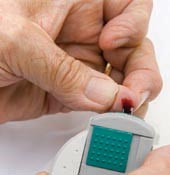Peer Reviewed
Feature Article Geriatrics
The insulin KISS in older people with type 2 diabetes (’keep insulin safe and simple’)
Abstract
The benefits and risks of tight glycaemic control in patients with type 2 diabetes change as patients get older and more frail. In elderly frail patients, the goal of glycaemic control becomes the maintaining of a balance between hypoglycaemia and hyperglycaemia.
Key Points
- In the ‘young old’ – people with a chronological age of over 65 years and a biological age of younger than 75 – tight glycaemic control can still reduce the complications of diabetes. In the ‘old old’ – people with a chronological age of over 65 years and a biological age of 75 or older – tight glycaemic control offers few long-term advantages and increases the burden of care and may reduce quality of life. The goal of glycaemic control in the ‘old old’ is to maintain a balance between hypoglycaemia and hyperglycaemia.
- The range of oral hypoglycaemic agents is more limited in the elderly and insulin therapy is generally started earlier in the course of type 2 diabetes in elderly people than in younger patients with the disease.
- Starting insulin in the ‘young old’ and ‘old old’ follows the same KISS (‘keep insulin safe and simple’) approach as applies to younger people, although in the ‘old old’ preprandial targets are likely to be higher (such as 5 to 7 mmol/L rather than 4 to 6 mmol/L) to reduce the risk of hypoglycaemia and/or reduce the burden of care.
- The basic insulin KISS approach is to first control the fasting blood glucose level (BGL), then the evening preprandial BGL and then any mealtime BGL increases.
- The choice of the insulin formulation is largely determined by the injection device suitable for the patient and/or carer but analogue insulins have advantages over traditional insulins in some circumstances.
- Premixed insulin preparations offer the benefit of convenience but are limited by fixed, and sometimes inappropriate, proportions of basal and bolus insulins.
Purchase the PDF version of this article
Already a subscriber? Login here.

